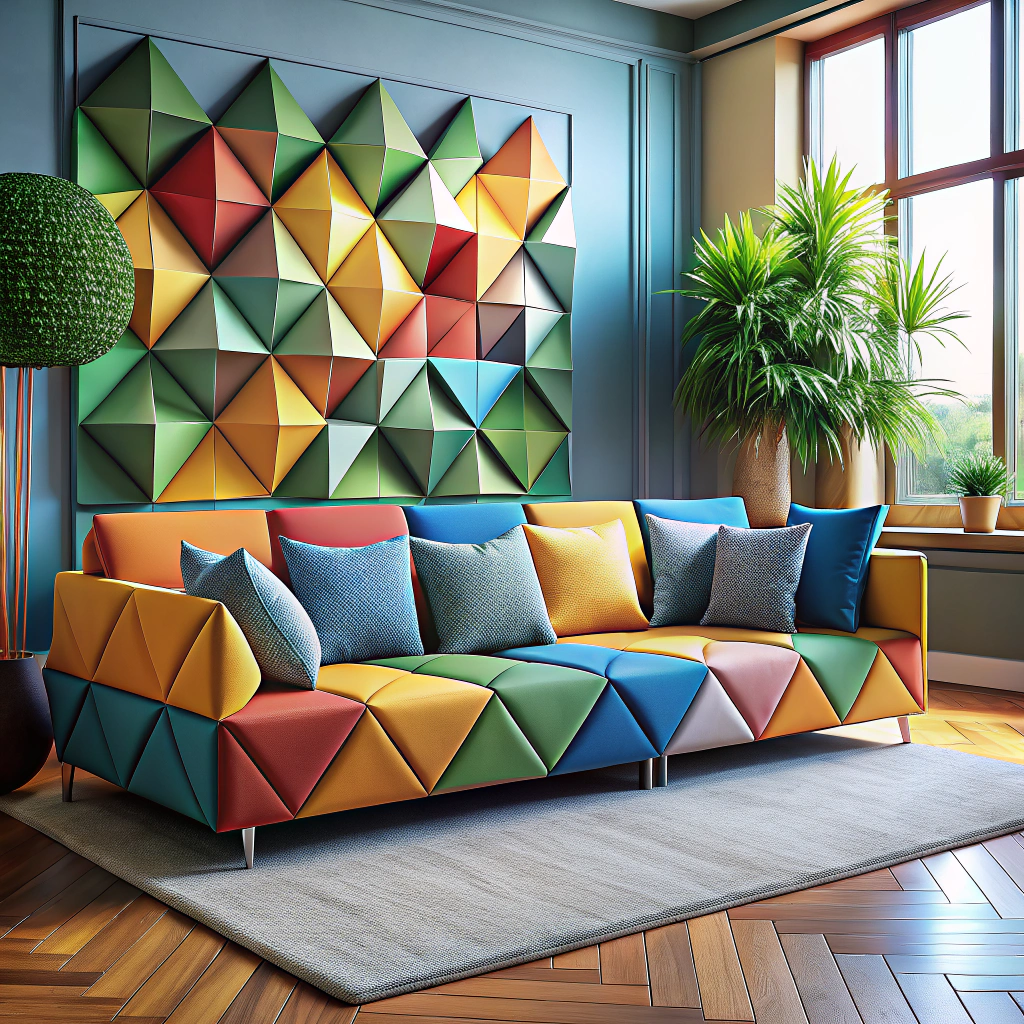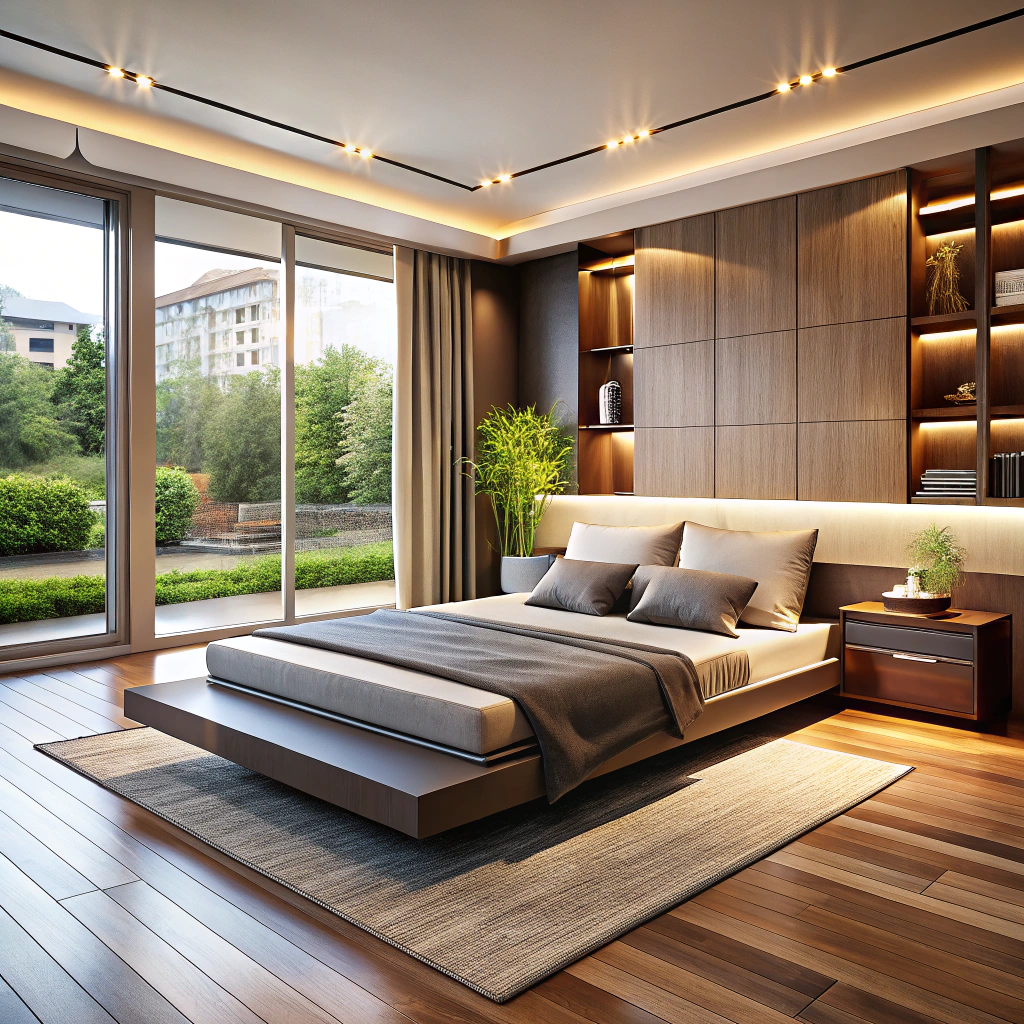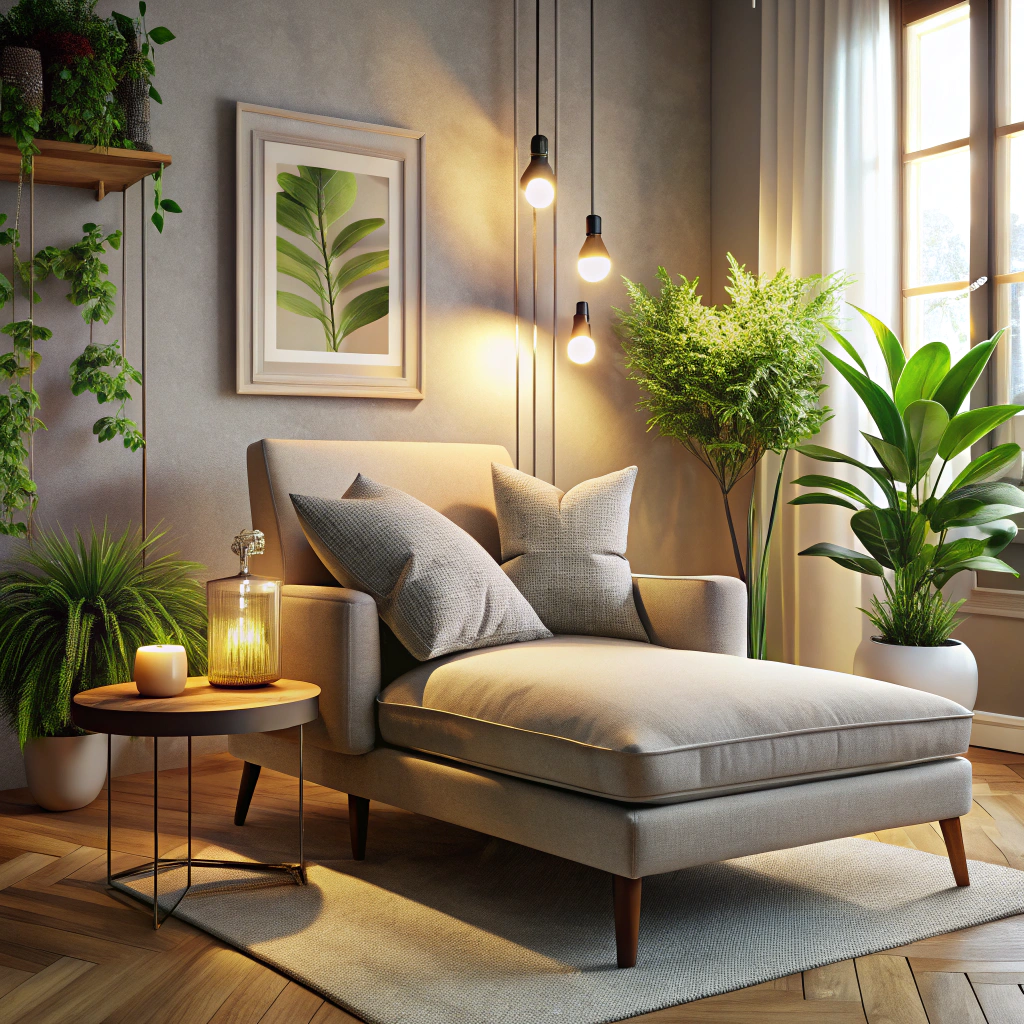Last updated on
Discover the key factors to consider when deciding if your Ottoman should match your couch, ensuring a harmonious and stylish living space.
Have you ever found yourself staring at your living room furniture, wondering if your ottoman has to match your couch? It’s a common question for anyone who wants to create a cohesive and stylish space. But the truth is, there’s no one-size-fits-all answer.
While some interior designers swear by matching ottomans and sofas, others believe that mixing and matching is the key to creating an eclectic and interesting look. So where do you stand on this debate? In this article, we’ll explore both sides of the argument and help you decide whether or not your ottoman needs to match your couch.
Let’s dive in!
Table of Contents
Ottoman and Couch: Defining the Terms
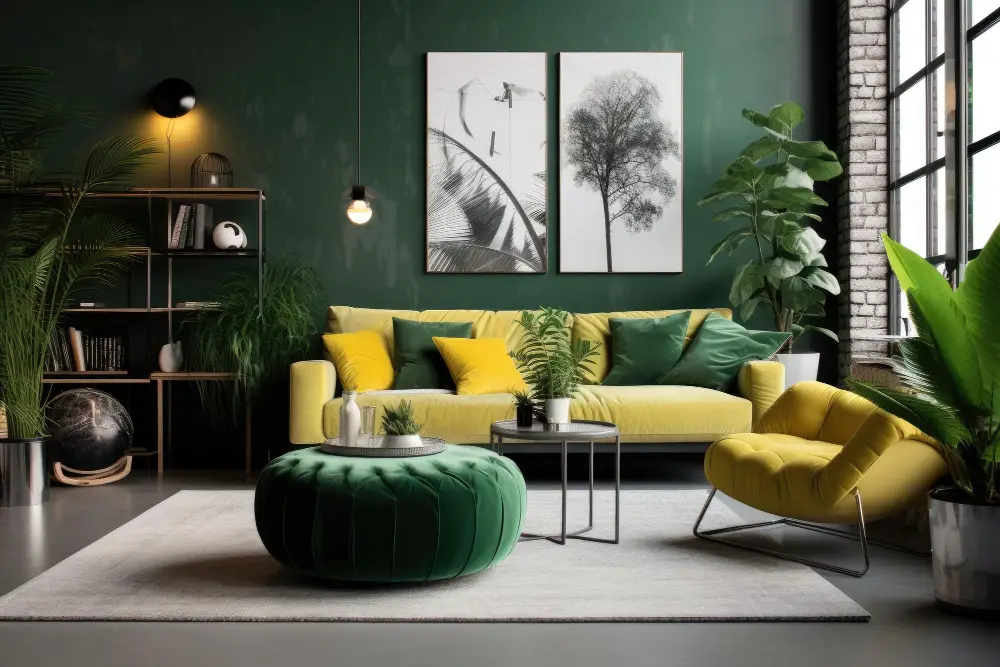
Before we dive into the debate on whether or not your ottoman needs to match your couch, let’s first define what these terms mean. An ottoman is a piece of furniture that typically has no back or arms and is used as a footrest, extra seating, or even storage.
It can come in various shapes and sizes – from round to square – and can be upholstered with different materials such as leather, fabric, velvet among others.
On the other hand, a couch (also known as sofa) is usually larger than an ottoman and designed for sitting rather than resting feet. It often comes with armrests and backs for support while seated comfortably.
Importance of Matching Furniture
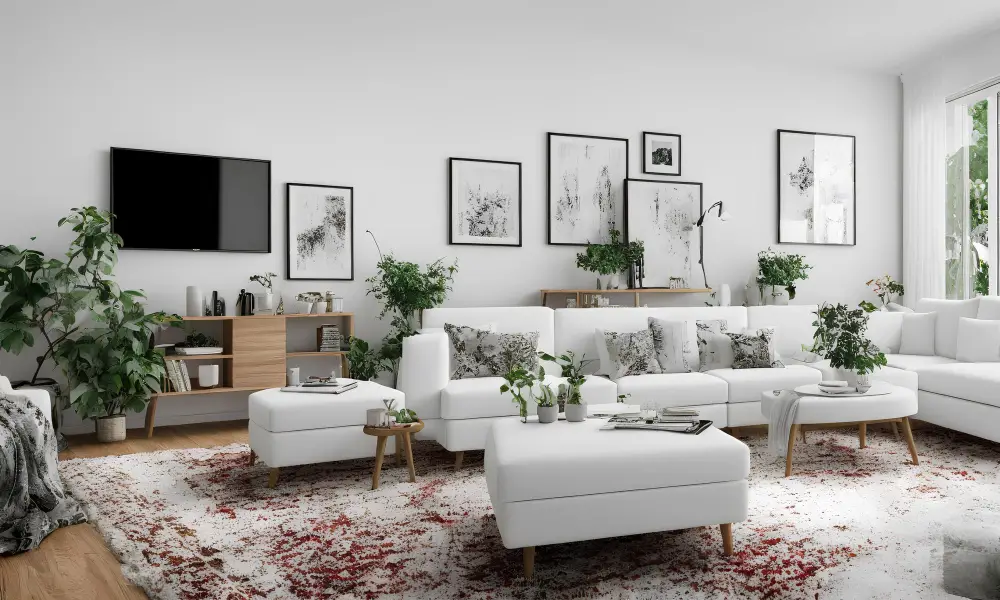
Coordinating pieces can create a cohesive and polished look that ties the space together. A well-matched ottoman and couch can make your living room feel more inviting, comfortable, and stylish.
Matching furniture also helps to establish a sense of balance in the room. When you have two large pieces of furniture like a sofa and an ottoman that don’t match each other or clash with one another’s style or color scheme, it creates visual chaos in the space.
However, keep in mind that matching doesn’t necessarily mean identical – there are many ways to coordinate without being too “matchy-matchy.” You could choose different shades of the same color family for both items or opt for complementary patterns instead of exact matches.
Style and Design Compatibility
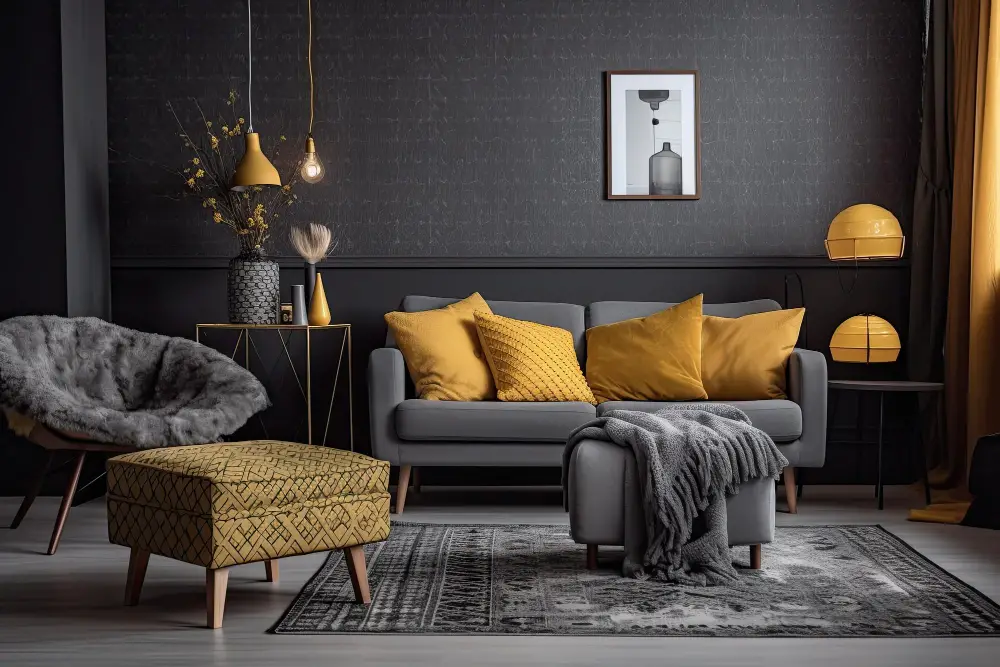
First, think about the overall aesthetic of your living room. Is it modern or traditional? Minimalist or eclectic? Your ottoman should complement the existing decor rather than clash with it.
If you have a sleek and contemporary sofa, for example, you might want to opt for an ottoman with clean lines and minimal embellishments. On the other hand, if your couch has ornate details or classic styling elements like rolled arms or tufted cushions, consider choosing an Ottoman that shares similar features.
Another factor is color coordination: If your couch is neutral in tone (such as beige), adding a pop of color through an Ottoman can be visually appealing while still maintaining harmony between pieces.
Material and Texture Considerations
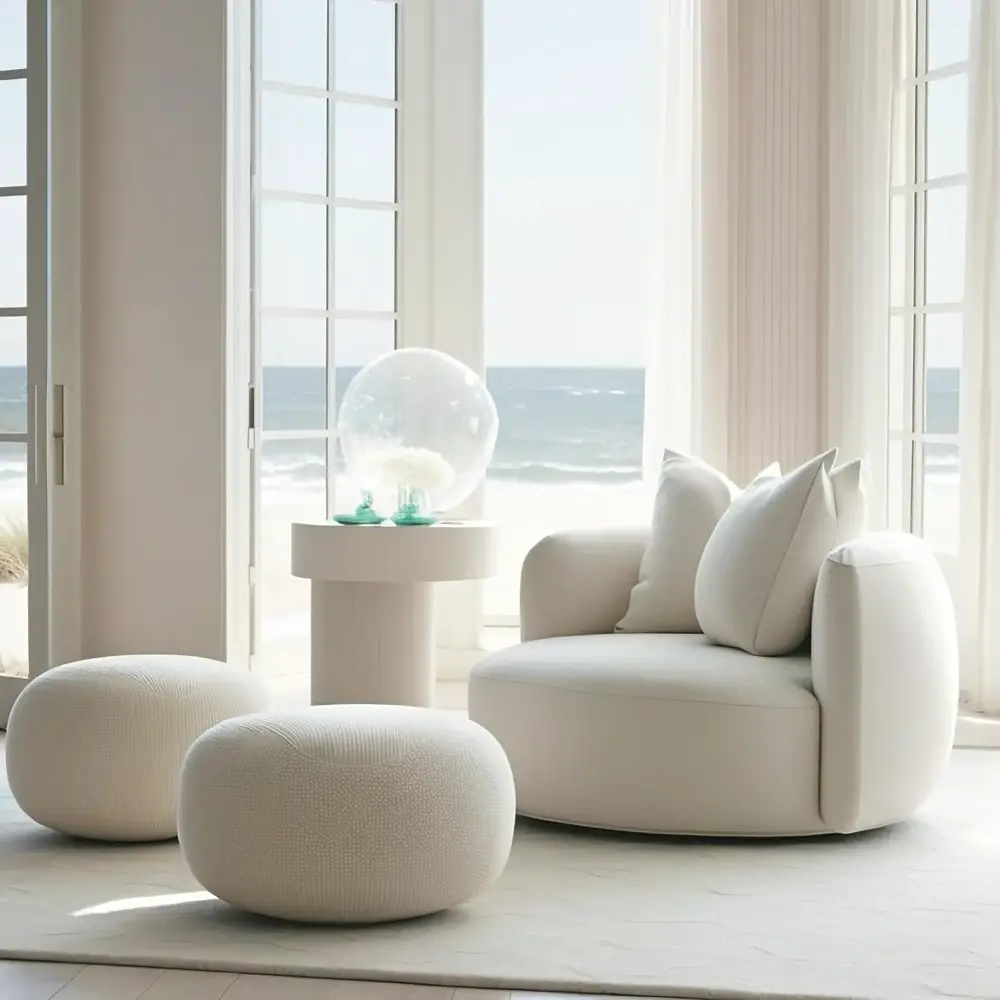
If you have a leather sofa, for example, you may want to choose an ottoman made of the same material or one with a similar texture. This will create a cohesive look and feel in your living room.
On the other hand, if your couch is upholstered in fabric or has intricate patterns on it, consider choosing an ottoman with simpler textures or materials such as velvet or suede. This will help balance out the visual weight of both pieces while still maintaining harmony.
Another factor to consider is durability and maintenance requirements. If you have kids or pets at home who love jumping on furniture (we don’t blame them!), then opting for durable materials like leather can be practical since they’re easy to clean up after spills and stains.
Color and Pattern Matching
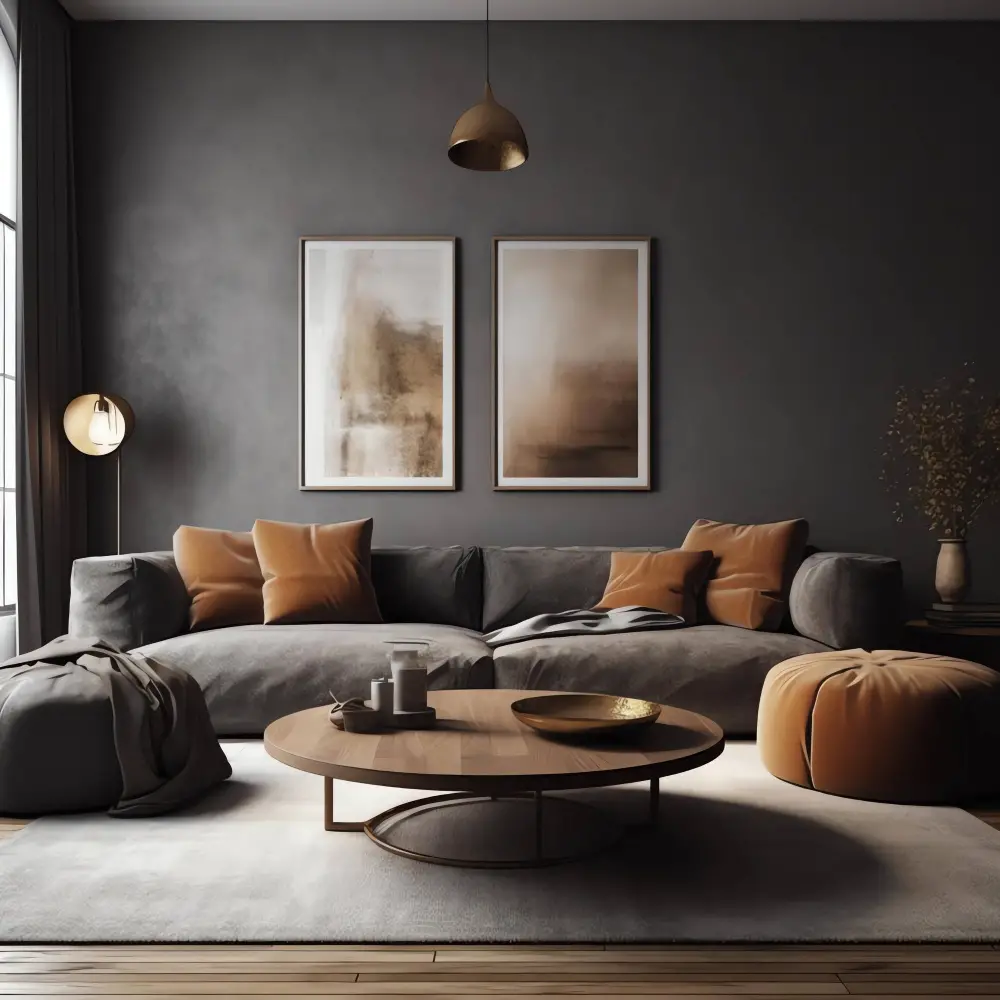
If you’re looking for a cohesive look, choosing an ottoman that matches the color of your couch is a safe bet. However, if you want to add some interest or contrast in your living room design, mixing patterns can be an excellent option.
If you decide on mixing patterns between the sofa and Ottoman pieces in different colors or designs make sure they complement each other well. For example: A solid-colored sofa will pair well with a patterned Ottoman piece that has similar shades as those found on the couch.
On the other hand, if both furniture items have bold prints or bright hues already incorporated into their design scheme then it’s best not to mix them up too much – instead opt for complementary tones like neutrals such as beige or gray which will help balance out any clashing colors while still adding visual interest without overwhelming one another.
Size and Proportion
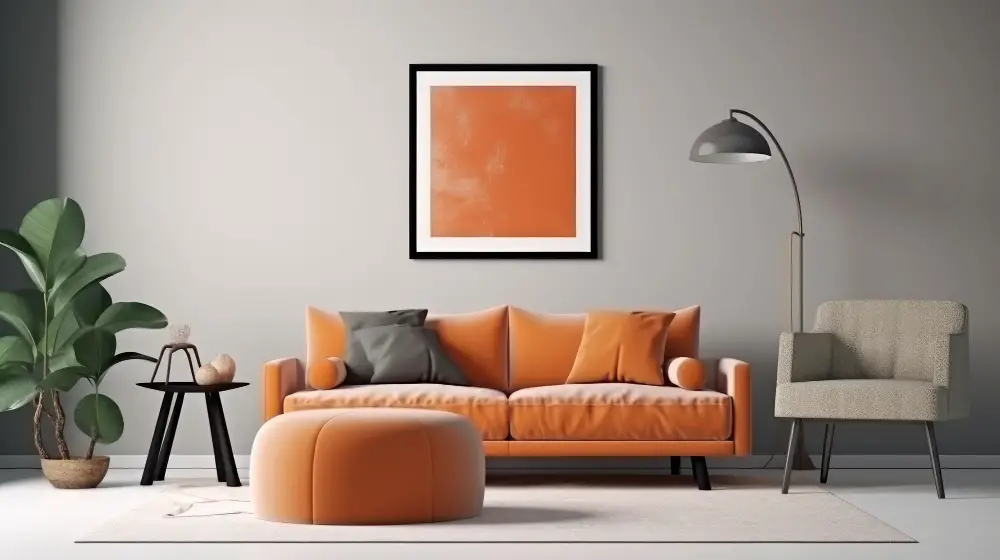
A small or oversized ottoman can throw off the balance of your living room furniture, making it look awkward and uninviting. To ensure a harmonious look, choose an ottoman that is proportional in size to your sofa.
If you have a large sectional sofa, opt for a bigger Ottoman with ample seating space; if you have a smaller loveseat or armchair, go for something more compact.
Another important consideration is the height of the Ottoman compared to the couch seat height. Ideally, they should be at similar heights so that when used together as footrests or extra seating options they feel comfortable and cohesive.
Proportionality also applies when considering shape: round Ottomans work well with curved sofas while square ones complement straight-lined designs better.
Choosing a Coordinating Ottoman
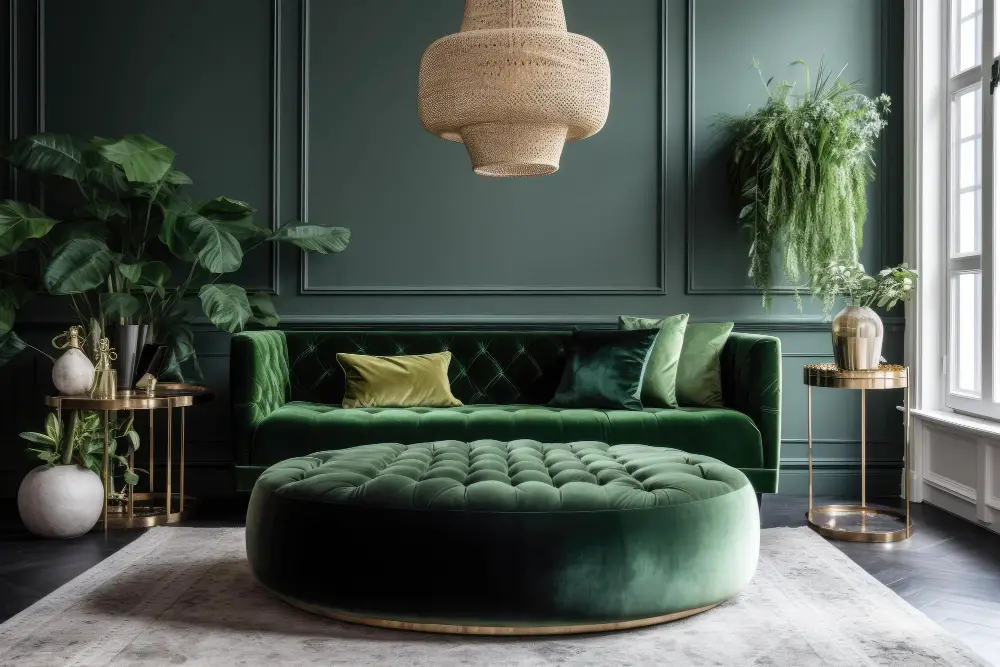
First and foremost, you want to make sure that the size of your ottoman is proportional to the size of your couch. A large sectional sofa will require a larger ottoman than a small loveseat or armchair.
Next, think about the style and design of both pieces. If you have a modern couch with clean lines and minimalistic features, choose an Ottoman that has similar characteristics such as straight edges or geometric shapes.
Another important consideration is color coordination. You can either match colors exactly for an elegant look or opt for complementary shades if you prefer something more eclectic.
Don’t forget about functionality! An Ottoman can serve many purposes beyond just being used as extra seating – it could also double up as storage space or even be converted into a coffee table with added trays on top!
Mix and Match: Ottoman With Couch
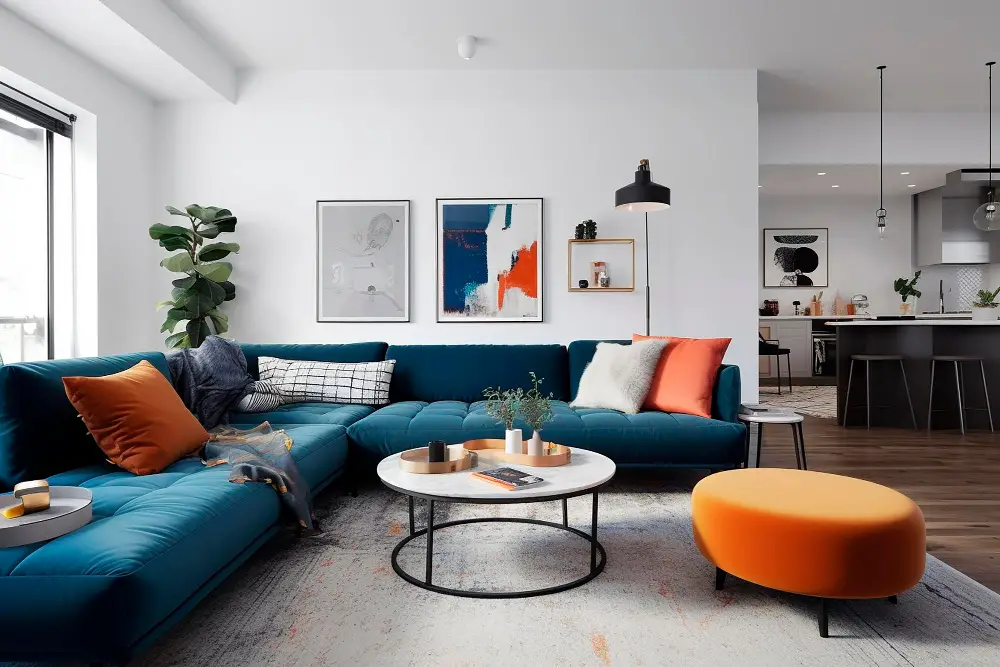
It’s also an excellent option if you’re working with existing furniture or on a budget. However, it can be challenging to get the right balance between cohesion and contrast when pairing different pieces.
One approach is to choose an ottoman that complements one of the colors in your sofa, creating a cohesive look while still adding some variety. For example, if you have a beige couch, consider pairing it with an ottoman in shades of brown or cream.
Another option is to mix patterns by choosing an Ottoman that has similar hues as the sofa but features different prints or textures. This technique works best when both pieces share at least one color for continuity purposes.
If you want more contrast between the two pieces but still want them visually connected somehow, try using complementary colors such as blue-orange or purple-yellow combinations for added depth without clashing too much.
Pairing Different Solid Colors
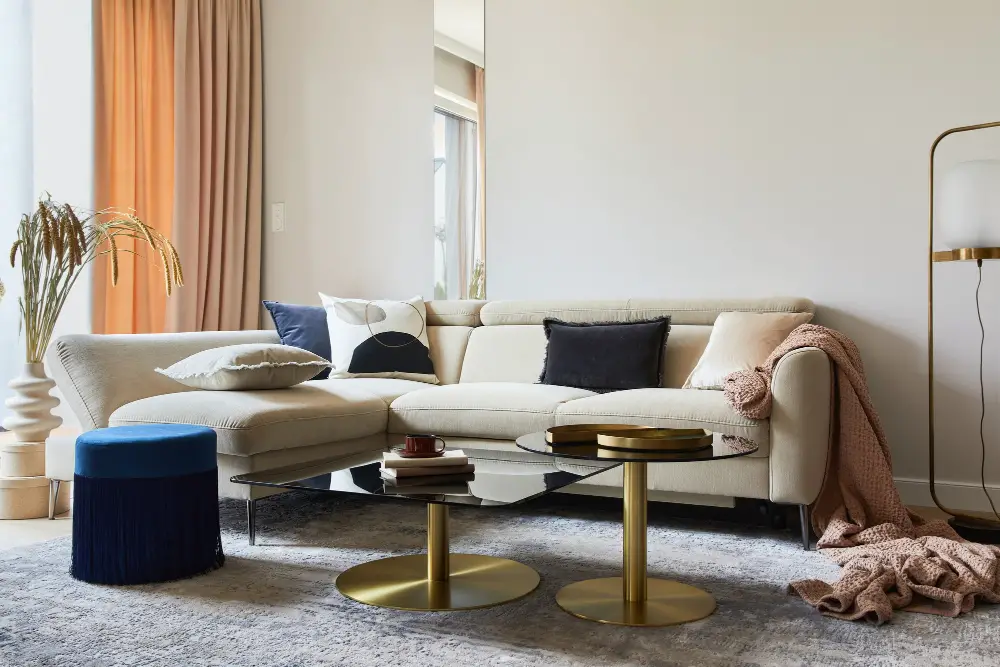
When it comes to matching your ottoman with the couch, consider choosing a color that complements or contrasts with the sofa’s hue. For example, if you have a beige couch, try pairing it with an ottoman in navy blue or forest green for added depth and contrast.
Another option is to choose an accent color from other elements in the room such as curtains or throw pillows and incorporate that into both pieces of furniture. This will create harmony throughout the space while still adding some variety.
Remember that when working with solid colors, texture plays a crucial role in creating visual interest. Consider mixing materials like leather and fabric for added dimensionality.
Pairing a Patterned Piece With A Solid One
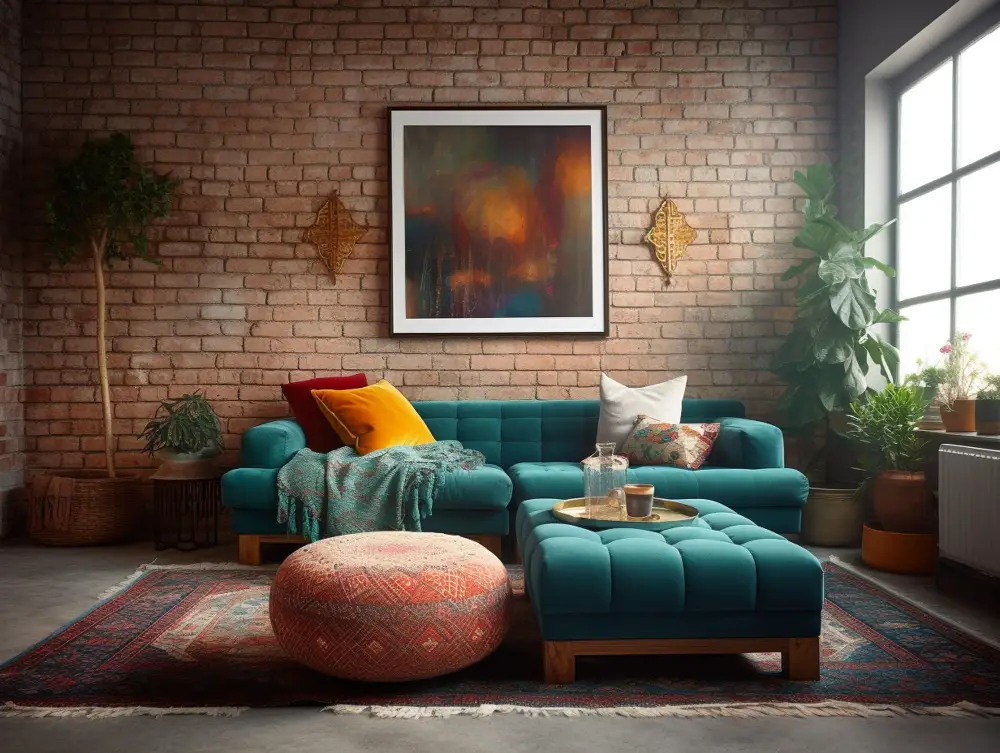
It’s important not to go overboard with too many patterns or clashing colors. One effective strategy is choosing one patterned piece as the focal point of the room, such as an accent chair or throw pillow, then selecting a coordinating solid color for your ottoman.
For example, if you have a bold floral print on your couch cushions or curtains in shades of blue and green tones; consider pairing them with an Ottoman in solid navy blue that complements the hues present in the patterned pieces. This will create balance while still allowing for some personality through prints.
Alternatively, you could choose an Ottoman that has subtle stripes or geometric shapes which complement but do not compete against other patterns already present within your living space.
Pairing Different Textures
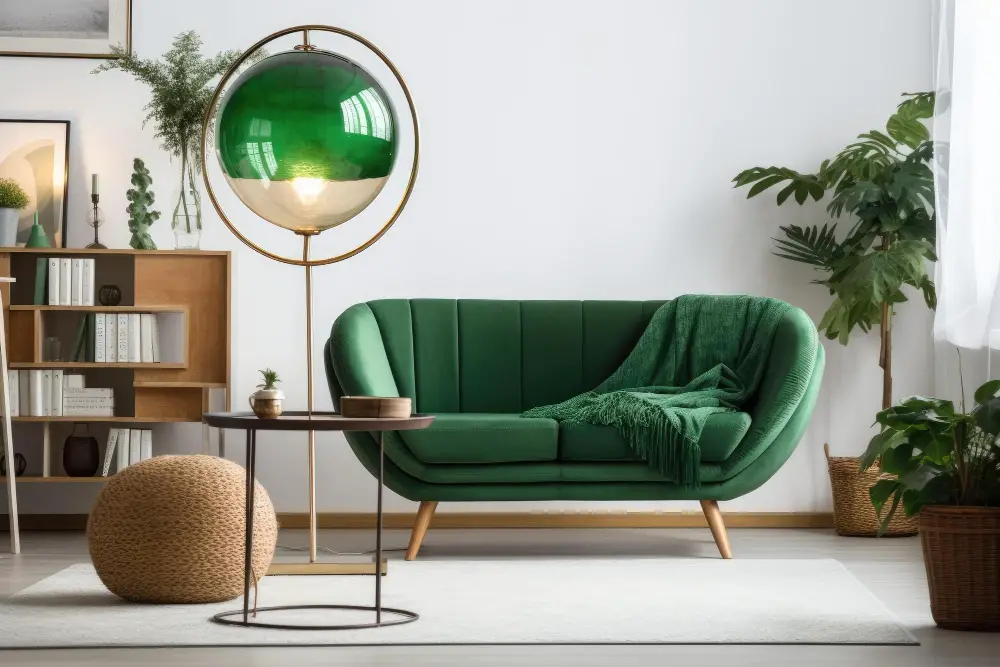
Mixing different textures can add depth and interest to your living space. For example, if you have a leather sofa, try pairing it with an upholstered fabric ottoman for contrast in texture.
Or if you have a plush velvet couch, pair it with a woven or rattan ottoman for added visual interest.
However, be careful not to go overboard when mixing textures as too many contrasting elements can create chaos instead of harmony in the room’s design scheme. A good rule of thumb is to stick within the same color palette while playing around with different materials and finishes.
Compatible Palettes
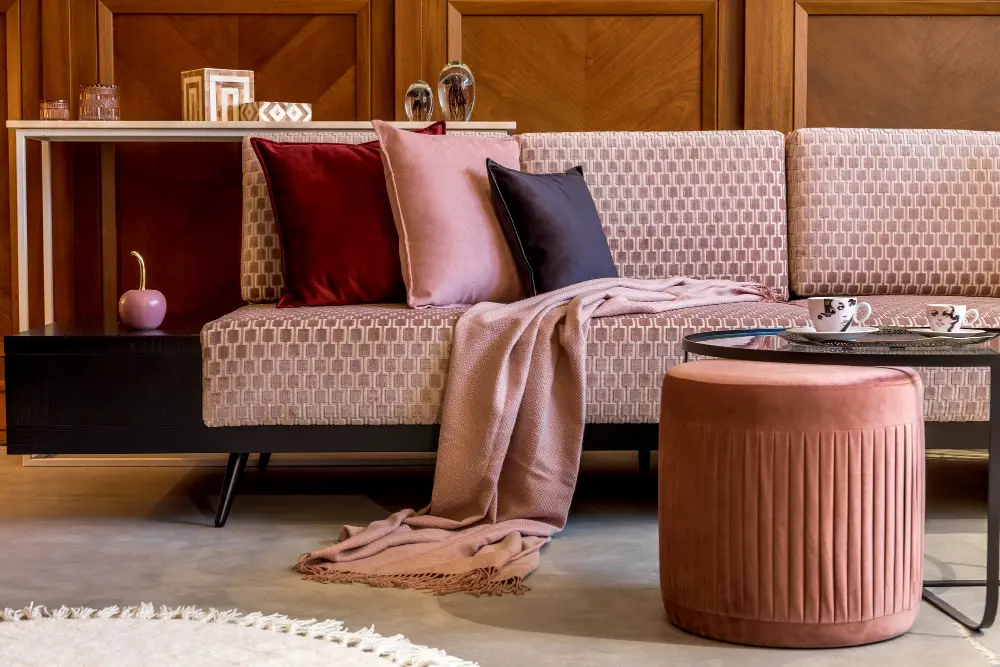
While some people prefer a monochromatic look, others like to mix and match different hues for a more eclectic feel. If you’re looking for compatible palettes that will work well together, there are several options available.
One popular choice is the use of complementary colors. These are colors that sit opposite each other on the color wheel and create a striking contrast when paired together.
For example, if your couch is blue, you might choose an orange or rust-colored ottoman as an accent piece.
Another option is analogous colors – these are hues that sit next to each other on the color wheel and create a harmonious blend when used together. For instance, if your sofa has green undertones in it then pairing it with an olive-green or yellowish-green Ottoman can be visually appealing.
If you want something more subtle yet still cohesive try using shades from within one family such as pastels or earth tones which have similar undertones but varying degrees of saturation making them easy on eyes while adding depth without being too overwhelming.
Contrasting Colors
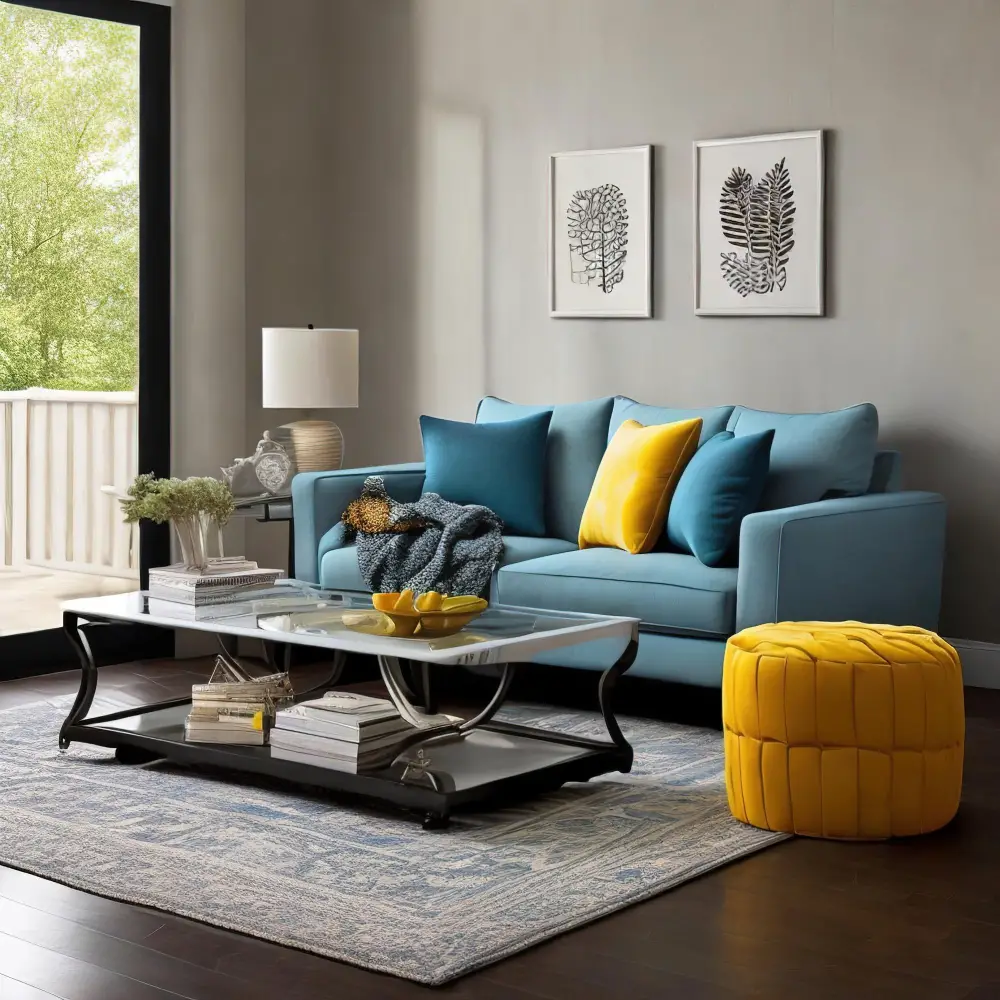
Contrasting colors are those that sit opposite each other on the color wheel, such as blue and orange or red and green. When used correctly, these combinations can create a bold and eye-catching look.
When it comes to choosing contrasting colors for your ottoman and couch pairing, there are a few things to keep in mind. First off, make sure that the hues you choose complement each other rather than clash.
For example, if your sofa is navy blue with white piping details consider adding an orange or yellow ottoman.
Another thing worth considering is how much contrast you want in the space overall; too much contrast may feel overwhelming while too little might not have enough impact on its own.
Matching Tones
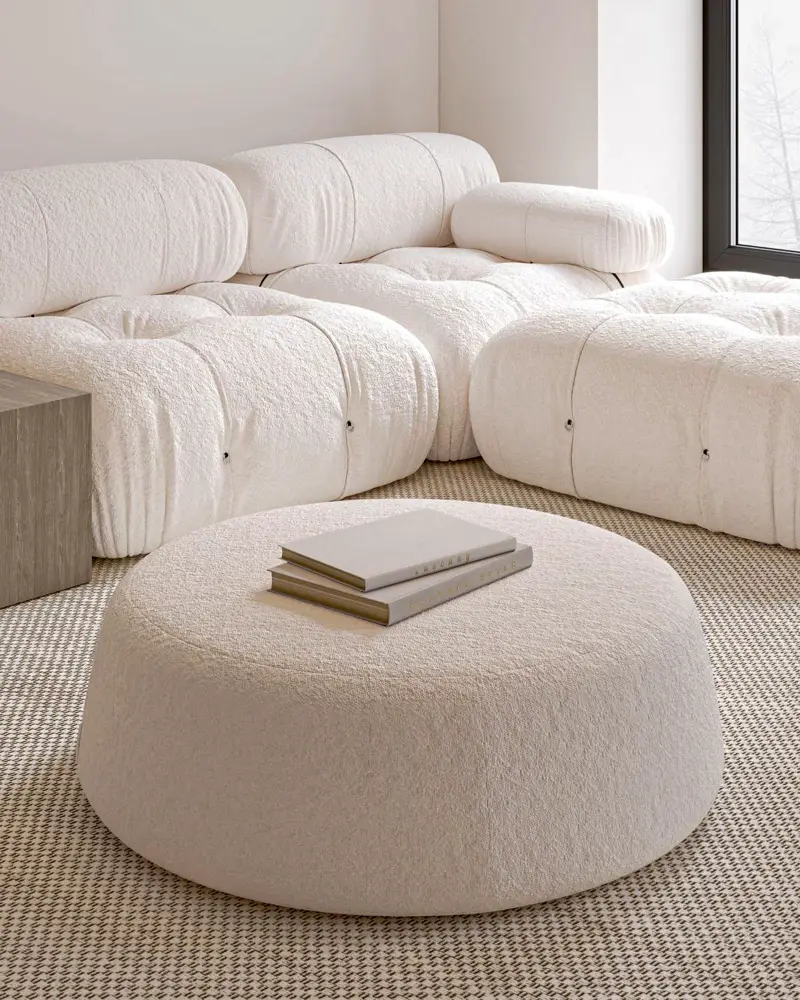
Tone refers to the lightness or darkness of a color and can have a significant impact on how well two pieces of furniture complement each other. If you’re looking for a cohesive look, it’s essential that both pieces have similar tones.
For example, if you have a dark brown leather sofa, pairing it with an ottoman in a lighter shade may create too much contrast and disrupt the flow of your living room design. Instead, opt for an ottoman in either the same shade as your couch or one that’s just slightly lighter or darker.
Similarly, if you’re working with neutral colors like beige or gray on both pieces but want some variation between them; choose shades within close proximity so they don’t clash against each other.
Adjust the Shades

For example, if you have a light-colored sofa, choose an ottoman in a slightly darker shade of the same color. This will create depth and interest without being too overwhelming.
On the other hand, if you have a dark-colored couch and want to add some contrast to your space, opt for an ottoman in a lighter shade of one of its accent colors. This will help break up any monotony while still maintaining cohesion.
Remember that it’s all about finding balance when it comes to matching furniture pieces like sofas and ottomans.
Details Matter
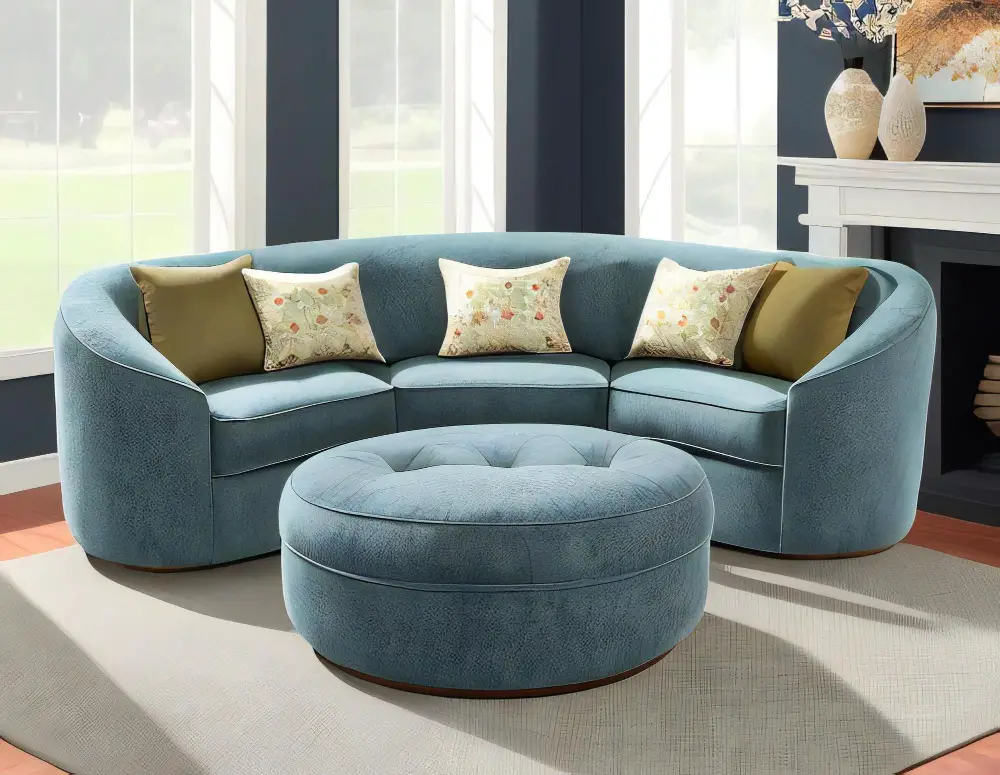
Even the smallest elements can make a big impact on the overall look and feel of your living space. This is especially true when it comes to matching your ottoman with your couch.
One important detail to consider is the shape of both pieces. If you have a curved sofa, for example, you may want to choose an ottoman with rounded edges that complements its shape.
Similarly, if you have a square or rectangular couch, an ottoman with sharp corners may be more appropriate.
Another detail that can make all the difference is trim or piping on both pieces of furniture. If your sofa has decorative trim around its edges or seams, choosing an Ottoman in a complementary color will help tie everything together seamlessly.
Finally yet importantly are accessories such as throw pillows and blankets which should also match either one piece (couch/ottoman) while complementing another element in terms of color scheme and texture.
Pair Bold Colors With Monochromes
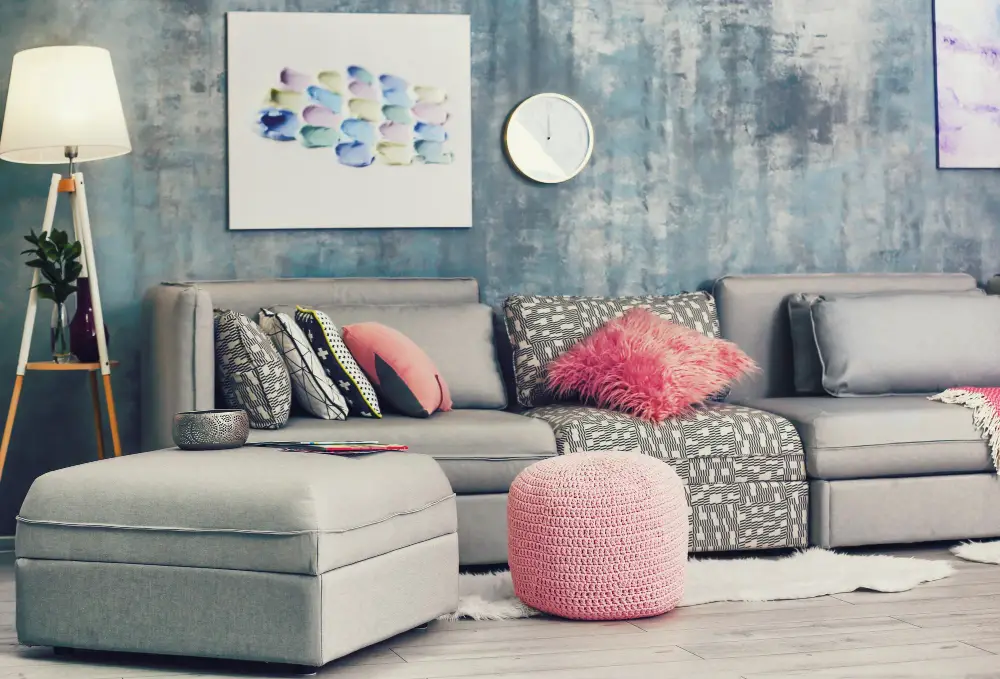
If you have a bright red couch, for example, consider pairing it with an ottoman in shades of gray or black. This will create a striking contrast that draws the eye and adds visual interest without overwhelming the space.
On the other hand, if you have a neutral-colored sofa like beige or cream, adding an ottoman in bold hues such as navy blue or emerald green can make your living room pop. The key is to choose complementary colors that work well together while still making each piece stand out on its own.
When pairing bold colors with monochromes, it’s important not to overdo it. Stick to one statement piece per seating area – either the couch or ottoman – and keep everything else relatively simple so as not to overwhelm the space visually.
Light and Dark Combinations
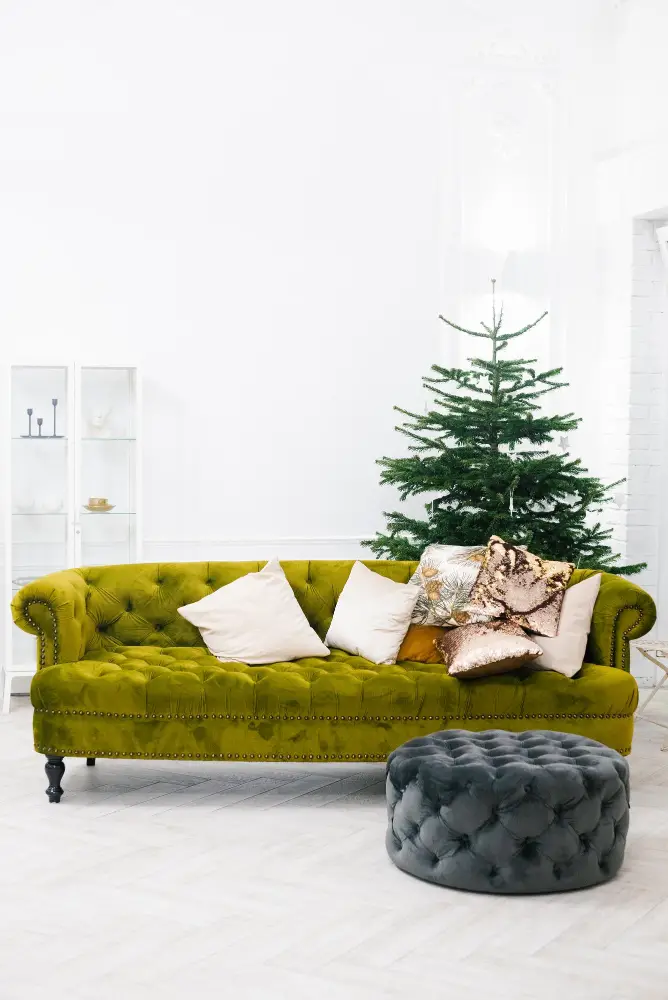
This combination creates a striking contrast that adds depth, dimension, and visual interest to your living space. For instance, if you have a light-colored sofa like beige or cream, consider adding an ottoman in dark brown or black leather for a sophisticated look.
Conversely, if you have a darker couch like navy blue or charcoal gray, try incorporating an ottoman in white or ivory fabric for balance.
When choosing between light and dark combinations for your furniture pieces’ color scheme; it’s essential to keep the room’s overall ambiance in mind. If you want your living room to feel cozy yet spacious at the same time; opt for lighter shades on larger surfaces such as walls while using darker hues on smaller items such as throw pillows.
Mixing different tones can create harmony within any interior design style when done correctly.
Usage and Functionality
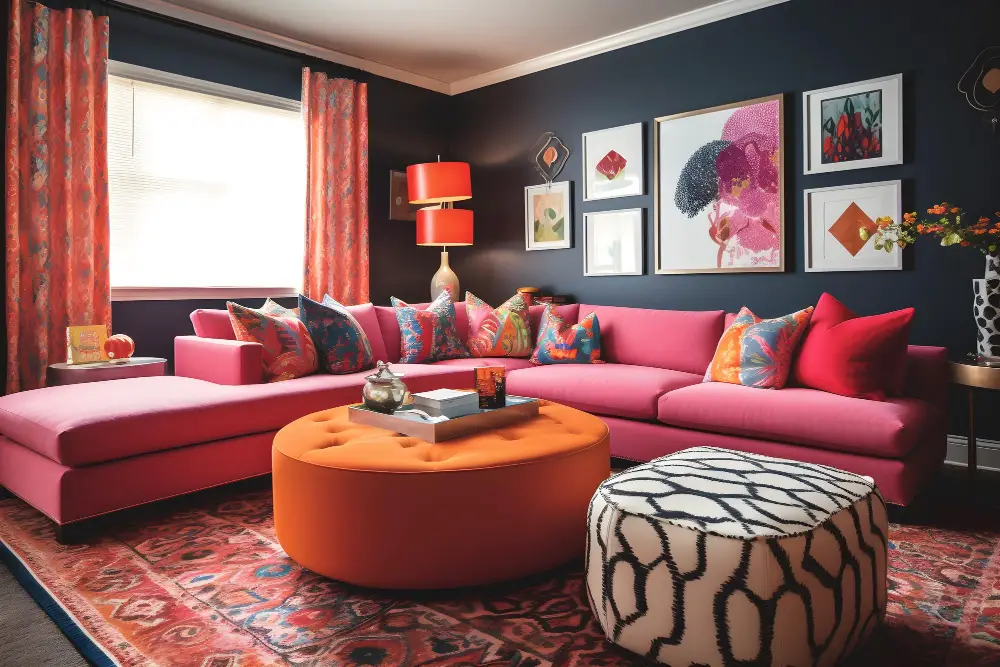
If you plan on using the ottoman as a footrest or extra seating, then matching it with the couch can create a cohesive look that ties the room together. However, if you want more flexibility in how you use your furniture, mixing and matching can be an excellent option.
For example, if you have a large sectional sofa but need additional seating for guests from time to time, adding an ottoman in a contrasting color or pattern can provide both style and function. You could also choose an upholstered storage ottoman that complements but doesn’t necessarily match your couch for added versatility.
Customizable Options
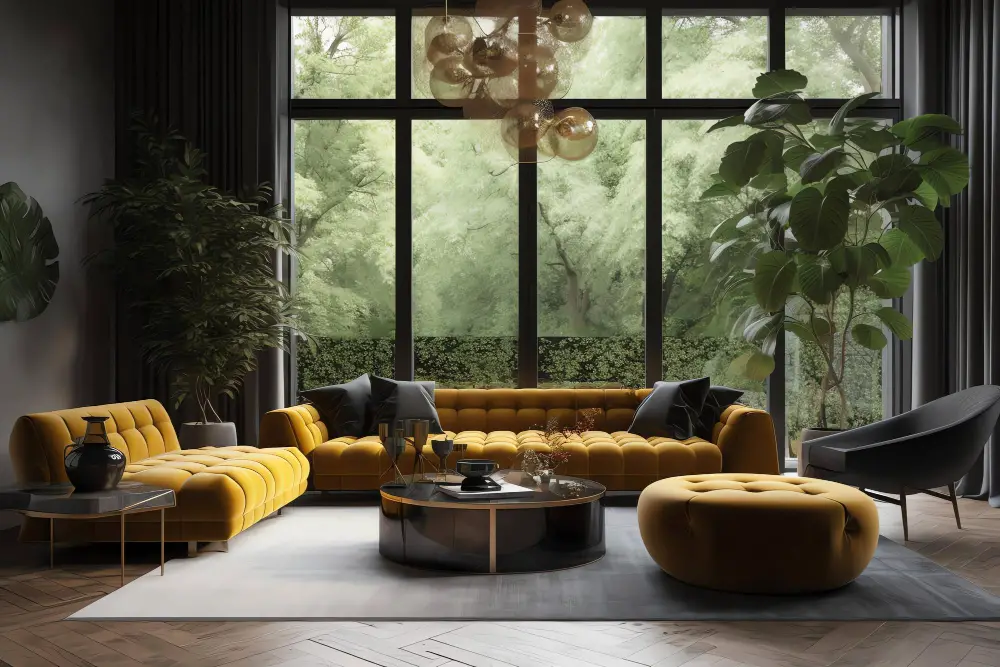
Many furniture stores offer the option to customize the color, fabric, and even size of an ottoman to perfectly match your couch. This is a great option if you have a unique sofa that’s difficult to find matching pieces for.
Another customizable option is choosing an ottoman with removable slipcovers. Slipcovers can be easily changed out depending on the season or mood of the room.
You could choose one set of slipcovers that matches your couch and another set in a contrasting color or pattern for added interest.
Ultimately, when it comes down to deciding whether or not your Ottoman should match Couch – there are no hard rules! It all depends on what look you want to achieve in your living space and how much effort you’re willing to put into finding coordinating pieces.
Budget Factors

If you’re on a tight budget, matching your ottoman and couch may not be feasible. However, there are ways to create a cohesive look without breaking the bank.
One option is to choose an ottoman that complements the color or pattern of your couch while still being different enough to add interest. For example, if you have a beige sofa with subtle stripes, consider an ottoman in solid beige or cream with texture like woven fabric or leather.
Another way is by choosing coordinating pieces from thrift stores and garage sales instead of buying new furniture sets. You can also opt for slipcovers that match both pieces so they appear as one unit.
Remember that investing in quality furniture will save money over time since it lasts longer than cheaper options which need frequent replacement due to wear and tear.
Room Layout and Arrangement
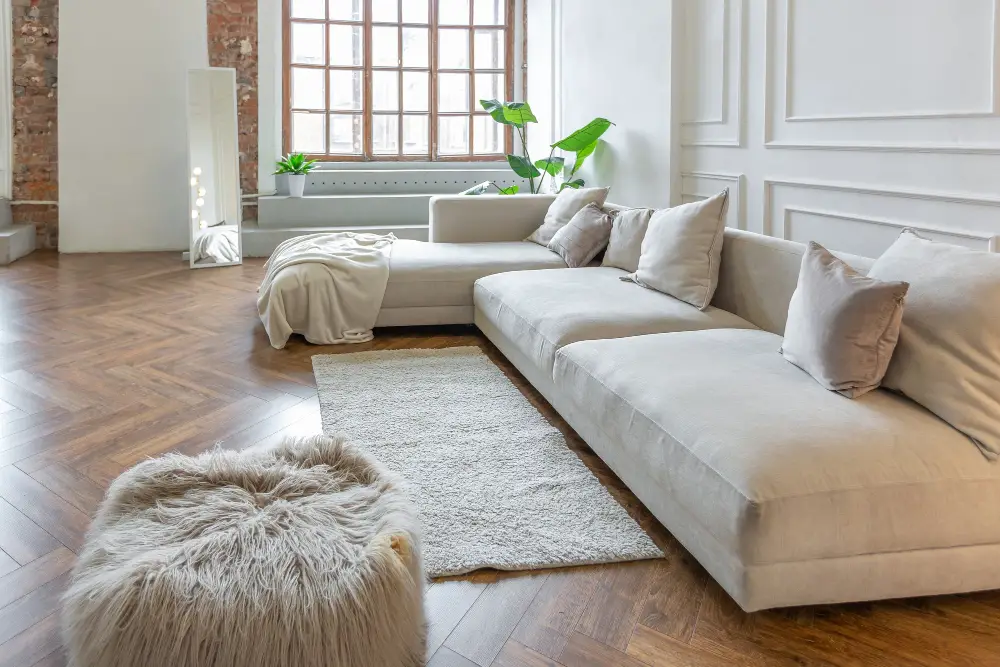
If you have a small space, matching furniture can help create an illusion of more space and make the room feel cohesive. On the other hand, if you have a larger living area with multiple seating options such as chairs or loveseats, mixing and matching furniture pieces can add visual interest to the space.
Consider how much traffic flows through your living room on average. If it’s high-traffic area where people are constantly moving around or sitting down in different spots throughout the day, then having coordinating pieces may be beneficial for creating continuity in design.
Ultimately though when considering whether an Ottoman has to match Couches one must consider their personal style preferences first before anything else; there is no right answer here!
FAQ
Can couch and ottoman be different colors?
Yes, a couch and ottoman can be different colors, as long as they are complementary and do not clash, ensuring a cohesive appearance in the room.
How do I choose an ottoman for my couch?
To choose an ottoman for your couch, select one that is 2/3rds the width of your sofa or sectional, and ensure there is 14″-18″ of space between them for comfortable passage and accessibility.
How do I choose an ottoman color?
To choose an ottoman color, select a contrasting bold primary color that adds a dash of color and balances your neutral-looking sofas.
How do you mix and match an ottoman?
To mix and match an ottoman, either emphasize the dominant color and style or provide a contrast, and consider using the same color and material as the sofa if you do not want it to compete with other dominant features in the space.
What are the key factors to consider when selecting a complementary ottoman for my couch?
Key factors to consider when selecting a complementary ottoman for your couch are: style, size, color, material, and functionality.
How can I incorporate an ottoman with a different fabric or texture into my living room design?
Incorporate an ottoman with a different fabric or texture into your living room design by placing it strategically as a contrasting statement piece, creating visual interest and adding depth to your space.
What are some creative ways to utilize mismatched ottomans and couches for an eclectic home aesthetic?
To create an eclectic home aesthetic, place mismatched ottomans and couches together by mixing bold patterns and colors, arranging them strategically in varying heights or shapes, and incorporating similar accent pieces to tie the look together.

